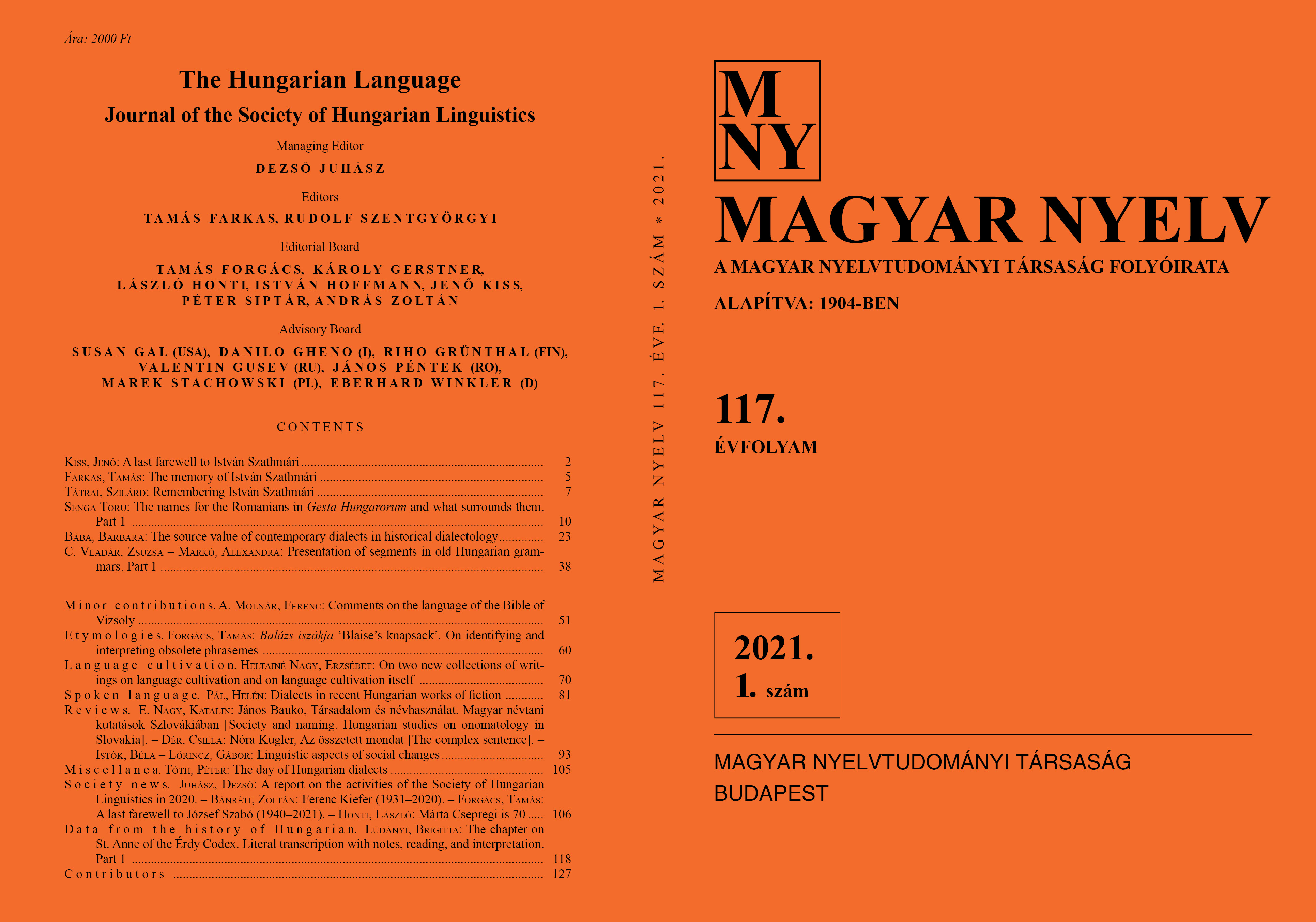Blaise's 'knapsack'
On identifying and interpreting obsolete phrasemes
DOI:
https://doi.org/10.18349/MagyarNyelv.2021.1.60Keywords:
idioms, phraseology, historical phraseology, origin of idioms, meaning of idioms, methodologyAbstract
This paper investigates a phrase (megszakasztja a Balázs iszákját ‘break Blaise’s knapsack’) found in a 17th century play, Actio Curiosa. The phrase seems idiomatic but neither the historical dictionaries of Hungarian nor the old collections of Hungarian idioms contain it. This study shows – with a methodological outlook – how phraseme-like expressions in old texts can be identified and their meaning recovered from the context. It can be shown that Balázs iszákja was a jocular, euphemistic expression for ‘anus’. It is important to note that it is found in several 17–18th century authors, i.e. it is not from a single author’s idiolect. Its iszák component means both a ‘knapsack’ and a ‘hose’, the latter of which is an excellent cognitive metaphor for ‘rectum’. Its Balázs component is less straightforward to explain but the name is commonly used in other phrasemes for capricious people, which might be how it became part of this idiom, too.
Downloads
Published
Issue
Section
License
Copyright (c) 2024 Tamás Forgács

This work is licensed under a Creative Commons Attribution-NonCommercial-NoDerivatives 4.0 International License.
Magyar Nyelv is a Diamond Open Access periodical. Documents can be freely downloaded and duplicated in an electronic format, and can be used unchanged and with due reference to the original source. Such use must not serve commercial purposes. In the case of any form of dissemination and use, Hungarian Copyright Act LXXVI/1999 and related laws are to be observed. The electronic version of the journal is subject to the regulations of CC BY-NC-ND (Creative Commons – Attribution-NonCommercial-NoDerivatives).
The journal permits its authors, at no cost and without any temporal limitation, to make pre-print copies of their manuscripts publicly available via email or in their own homepage or that of their institution, or in either closed or free-for-all repositories of their institutions/universities, or other non-profit websites, in the form accepted by the journal editor for publication and even containing amendments on the basis of reviewers’ comments. When the authors publicize their papers in this manner, they have to warn their readers that the manuscript at hand is not the final published version of the work. Once the paper has been published in a printed or online form, the authors are allowed (and advised) to use that (post-print) version for the above purposes. In that case, they have to indicate the exact location and other data of the journal publication. The authors retain the copyright of their papers; however, in the case of an occasional secondary publication, the bibliographical data of the first publication have to be included.



